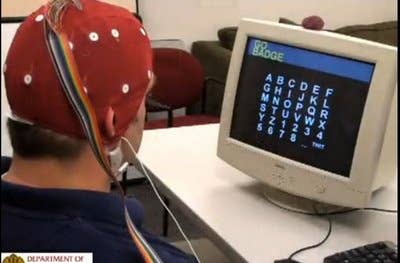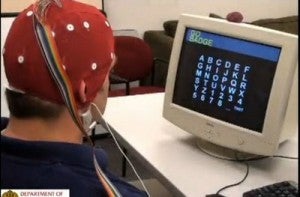BCI2000 Lets Your Mind Control Computers

Share

Usually wearing a silly hat and staring at the computer doesn't do anything besides make you lonely, but now with BCI 2000, that's going to change. You've probably seen some of the really great videos of researchers playing pong, typing words, and controlling robots using just their thoughts. But did you know that they all relied upon the same software program to work? Brain Computer Interface 2000 is a software tool that facilitates reading brain signals in real time. That means EEGs and ECoGs can work better and faster. Why do you care? BCI 2000 lets you control computers with your mind. Someone even posted a tweet using BCI2000 and an EEG! Check out all the cool vids after the break.
Based out of New York and the University of Tubingen in Germany, BCI 2000 is helping make progress in a variety of institutions. The cool videos we have here all show how their software can be used to facilitate controlling computers, but the technology has a little more depth than that. Scientists can use BCI2000 to improve the clarity in their biosignal processing, and make rapid strides in their research. In fact, BCI 2000 has an open license so that those in academia or research centers can utilize it free of charge. Of course, generosity, as cool as it may be, isn't quite as entertaining as watching someone play Spaced Invaders with their cerebral cortex.
You'll notice that in each of these videos the controls have been simplified considerably. Typically the user is only required to control a single icon on the screen, and never in more than two dimensions. It's also unclear what kinds of thought the test subjects are thinking. EEG and ECoG scans can focus on a wide range of neural activity: upper level thinking as well as motor neurons. There's no guarantee then, that BCI 2000 let's you control a robotic hand the same way as you control your own hand.
Be Part of the Future
Sign up to receive top stories about groundbreaking technologies and visionary thinkers from SingularityHub.


Compare this to the Braingate interface we've discussed before, which directly reads motor neuron signals, and is intuitive enough for use by monkeys. Of course, Braingate requires major surgery to install a chip on your brain, while BCI 2000 just requires you to wear a surface scan array. The less invasive procedure would certainly be more popular if it could provide the same level of resolution. We'll let you know more about how these two techniques stack up to each as we learn more.
Part of the problem with evaluating BCI2000 is that it's not tied to any single research. There have been many successful uses that simply involved better data analysis. Then again, it's helped guide a robot dog (see below). More than 35 scientific papers were published last year that involved using BCI 2000 in some form or another. In the end, however, BCI 2000 isn't thought-control technology, it's just thought-analysis technology that's occasionally been put to that use.
Which is still pretty cool. There's only so many times I can watch people move cursors with their thoughts before I get a serious case of envy. I can't wait until BCI 2000, or some other software tool, becomes sophisticated enough to allow three dimensional control and direct one to one mapping between thoughts and actions. Guiding a cursor to help direct a robot dog is neat, but there will come a day when the robot could follow your thoughts just like your hands or fingers do. Brain computer interfacing is developing rapidly, so go ahead and find yourself a silly hat. It will come in handy soon.
Related Articles

Your ChatGPT Habit Could Depend on Nuclear Power

AI Can Now Design Proteins and DNA. Scientists Warn We Need Biosecurity Rules Before It’s Too Late.

This Light-Powered AI Chip Is 100x Faster Than a Top Nvidia GPU
What we’re reading